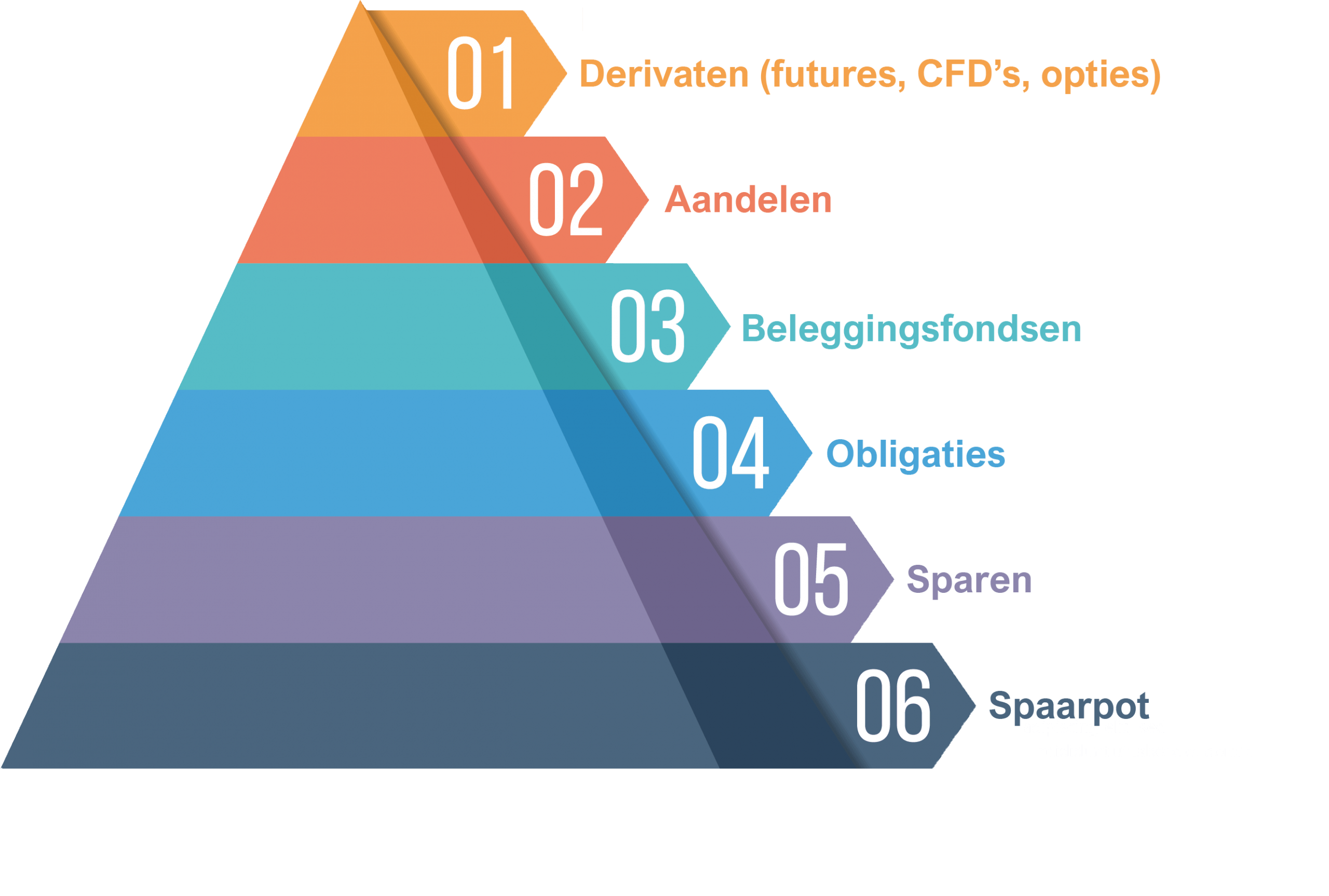The risks of the different investment forms
There is a big difference between investing and speculating. With investing, you fix your available money for a certain period. The goal is not to make money immediately, but later. With speculating, on the other hand, you invest your money in financial products to make a profit in the short term.
You decide which financial product you want to buy by considering which strategy suits you best. Do you want to try to earn a lot of money quickly with the necessary risks, because you do not want to tie up your money for a long time? Then you choose risky investments. If it does not matter to you that the investments have a longer term and you cannot access your money so quickly, you can choose to invest less riskily. There are more investment forms that are in between.
Different risk profiles
Investments and speculations are all about risks and returns. There are risks associated with every form of investment. If you have money at your disposal that you do not need immediately, you can easily opt for investments with a shorter or longer term to earn money with it. You are then bound to a certain investment period. This is in contrast to derivatives , which do involve a higher risk.
The risk you run with a certain investment can be higher or lower, depending on the chosen investment forms. This is clearly visible in the following pyramid;
From the top of the pyramid we can find the financial products with the highest risk. These are the derivatives. Further down the risk gradually decreases.

Risk profile as an investor
This overview is important to start from when determining a risk profile that suits you. You can link a risk profile to every investment and investor. This is the degree of risk that you want to take when you invest your money in something. The risk that you then accept depends on your budget and your personality traits. If you are quickly concerned about the course of your investments, it is not a good choice to enter into risky investments. Not even if a certain risk would be acceptable in financial terms. You can also say the opposite: if someone dares to take a lot of risk, that does not immediately mean that you should do so. This also has consequences for the finances. The risk of this is partly determined by what someone can afford financially.
There are various intermediate forms of investments with a very high risk on the one hand and investments with a low risk on the other. It is often better to spread the risks by investing money in different financial products with the associated risks. It is also advisable to ask yourself a number of questions regarding the risks associated with different investment instruments, in order to follow a strategy on the basis of that. Before you can start investing, it is also necessary to draw up a risk profile, which you can then start from.
Compare brokers and start investing
Are you excited about investing after reading this article about the risks of different investment forms? Compare online brokers and find the broker that suits you best!